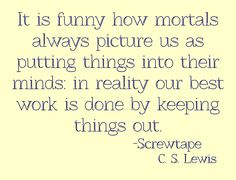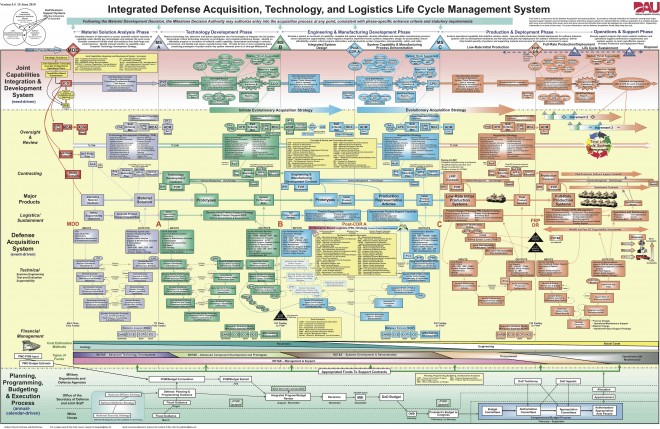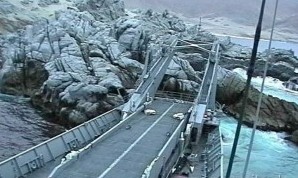Unfortunately, Brian Williams, NBC News anchor who is under the gun for exaggerating his “Combat” experiences, is not the only instance of politicians, military leaders and corporate executives that got caught gilding their own lilies. Mr. Williams’ latest predicament has brought to mind a few ideas which I thought I would share with leaders of all sorts, military and civilian.
The first that comes to mind is that people in positions of authority (like national news anchors) are always being watched…I don’t mean NSA-type watch (although I have no doubt they are watching each and everyone of us), but being watched by those who work for and listen to them. Their every word is heard, digested, analyzed just as their every action is recorded and digested in someone’s brain. It’s natural that leaders are watchable people.  Hopefully, their people want to be like them. It is said in the Navy that a ship mirrors the personality of its captain, and I am here to tell you that it is absolutely true. I’ve seen it again and again. It’s because everyone is watching the Captain…they want to do things his way, they want to respond the way she responds. What Officer of the Deck (OOD) hasn’t been standing watch on the bridge in a dark and stormy night and mused, “What would the Captain do?” With this scrutiny comes the responsibility to always act and talk like you are in a classroom filled with wide-eyed kids who are going to go home and tell their parents everything you did and said. Even when you think they are not watching, they are….especially in the digital age of tweets, twerks, instagrams, posts, e-mail, etc. Mr. Williams, regrettably, has (had, once NBC dumps him) millions watching him and the example he set certainly fell short of the mark. C’mon Brian!
Hopefully, their people want to be like them. It is said in the Navy that a ship mirrors the personality of its captain, and I am here to tell you that it is absolutely true. I’ve seen it again and again. It’s because everyone is watching the Captain…they want to do things his way, they want to respond the way she responds. What Officer of the Deck (OOD) hasn’t been standing watch on the bridge in a dark and stormy night and mused, “What would the Captain do?” With this scrutiny comes the responsibility to always act and talk like you are in a classroom filled with wide-eyed kids who are going to go home and tell their parents everything you did and said. Even when you think they are not watching, they are….especially in the digital age of tweets, twerks, instagrams, posts, e-mail, etc. Mr. Williams, regrettably, has (had, once NBC dumps him) millions watching him and the example he set certainly fell short of the mark. C’mon Brian!
Second, I think Mr. Williams wanted so much to be like the exceptional men and women that serve in our military, that he just had to seize on any opportunity to “be like them.” Frankly, there are many folks out there in that boat…those who had an opportunity to serve in the Armed Forces and either didn’t or couldn’t. When they see their countrymen and women risking life, limb and happiness they regret not having served. I see this a lot in politicians who never served in the military. And so, they begin to find ways to “join the club.” Some are deserving of club membership, combat correspondents, foreign service officers, police, firemen, and all other manner of folks who put themselves in harm’s way for whatever reason. But merely telling a story to gain membership in the club is not enough. Sure, he wanted to be in the helo that was shot down, but he wasn’t. C’mon Brian!
Now NBC is investigating Mr. Williams for what may have been other exaggerations during his career. Here’s a link to an article that calls into question the truthfulness of his coverage of Hurricane Katrina. The lesson to be learned here is a bit more subtle, but oh so important. Once you decide to tell the smallest of “untruths” and get away with it, you are set on a path of inevitable ruin. One of my favorite books, The Screwtape Letters, by C.S. Lewis describes the trials and tribulations of a young, apprentice devil, Wormwood, and his uncle and mentor, senior devil Screwtape.  In order to be promoted, Wormwood must take a human and corrupt him so that he is doomed to Hell. Uncle Screwtape provides advice and counsel. Wormwood’s problem is that everytime he makes some inroads in the corruption of his “patient”, the patient goes to church and is set back on the straight and narrow. Wormwood decides he needs to orchestrate a “Big” event to damn his patient once and for all. When he informs Screwtape of the plan, Uncle Srewtape replies, “Indeed the safest road to Hell is the gradual one–the gentle slope, soft underfoot, without sudden turnings, without milestones, without signposts,….” Indeed, once you start down the slippery slope of exaggeration before you know it the external temperature will begin rising to an uncomfortable level. And then it’s too late. Who knows when the NBC news anchor started down the “gentle slope?” C’mon Brian!
In order to be promoted, Wormwood must take a human and corrupt him so that he is doomed to Hell. Uncle Screwtape provides advice and counsel. Wormwood’s problem is that everytime he makes some inroads in the corruption of his “patient”, the patient goes to church and is set back on the straight and narrow. Wormwood decides he needs to orchestrate a “Big” event to damn his patient once and for all. When he informs Screwtape of the plan, Uncle Srewtape replies, “Indeed the safest road to Hell is the gradual one–the gentle slope, soft underfoot, without sudden turnings, without milestones, without signposts,….” Indeed, once you start down the slippery slope of exaggeration before you know it the external temperature will begin rising to an uncomfortable level. And then it’s too late. Who knows when the NBC news anchor started down the “gentle slope?” C’mon Brian!
And I don’t buy for a minute Mr. Williams’ explanation that “I forgot.” Baloney! If you are in a helo that gets shot out of the sky you will remember….and just as clearly you will remember you were not. I was in the Pentagon on 9/11. I was near where the airplane hit…heard it, felt it, smelled it. I will never forget. I clearly remember my first real combat mission during Operation El Dorado Canyon(Lybia 1986). I flew on the strike…I got shot at……I was scared $%*%^&&^less. If I had flown that night in a tanker mission which didn’t go over the beach….I would remember that clearly too. One just does not forget those life-changing events, nor do they confuse them. Now I know that PTSD and TBI may alter memories, but I doubt if Mr. Williams suffers from those problems. C’mon Brian!
I must make a qualifier here….There will always be Sea Stories, War stories, exaggerations and boasting where Warriors gather. We all know to take what is said with a grain of salt. Indeed, I always thought that if I ever wrote a book about my experiences in the Navy the preface would say,
“These stories have some basis in fact, although over the years they have been embellished so as to make them either more believable or less non-believable. I do not state that they are the absolute truth, nor are they lies. They are just the way I have told them over the years and, like a fine wine, they improved with age. This is a book of fiction, inspired by memorable events. Do not cite this book as a reference for any serious endeavor.”
The key point about sea stories and the like is that one must have shared the years of separation from families, faced the horror of combat, walked in the shoes of the brave, been there-done that to be a credible teller of these tales. Mr. Williams is not, and was not…and therefore gets no sympathy from me.


 regarding the relief of 16 Air Force officers
regarding the relief of 16 Air Force officers Back to the nuke thing. One thing I knew as an Attack Squadron Commanding Officer: The quickest way to be relieved without question was to score anything other than an outstanding on nuke inspections. Consequently, I put my absolute best officers and enlisted personnel in those positions. I assume the same is true in the Air Force, so that the absolute best must be assigned nuclear positions. In that business, there is no room for error. Obviously some house cleaning was needed and the Air Force leadership did what they had to do.
Back to the nuke thing. One thing I knew as an Attack Squadron Commanding Officer: The quickest way to be relieved without question was to score anything other than an outstanding on nuke inspections. Consequently, I put my absolute best officers and enlisted personnel in those positions. I assume the same is true in the Air Force, so that the absolute best must be assigned nuclear positions. In that business, there is no room for error. Obviously some house cleaning was needed and the Air Force leadership did what they had to do. Second was the publishing of a report by the Senate Permanent Subcommittee on Investigations, Chaired by Senator Levin, with Senator McCain as the Ranking Member. The report, entitled “
Second was the publishing of a report by the Senate Permanent Subcommittee on Investigations, Chaired by Senator Levin, with Senator McCain as the Ranking Member. The report, entitled “

 a good topic for you small business owners to consider because the Small Business Administration cites unexpected growth as a major reason for small business failure. This is something that CCA has focused on as we developed our market strategy. Take a look at some of my thought on “
a good topic for you small business owners to consider because the Small Business Administration cites unexpected growth as a major reason for small business failure. This is something that CCA has focused on as we developed our market strategy. Take a look at some of my thought on “ It also took some sophistication because we discovered that more power was not the answer in breaking the sound barrier. Turns out something called the
It also took some sophistication because we discovered that more power was not the answer in breaking the sound barrier. Turns out something called the  that’s my pitch for the day. Think about your business in aviation terms and anticipate the risks that are out there just waiting for you. They can be predicted, avoided or dealt with. But only if you go in with eyes open and scanning on the horizon. As the proud owner of a successful small business about to become large, your scan needs to move to the horizon of your business not right in front of your nose. If you aren’t scanning the horizon then you are a candidate for failure.
that’s my pitch for the day. Think about your business in aviation terms and anticipate the risks that are out there just waiting for you. They can be predicted, avoided or dealt with. But only if you go in with eyes open and scanning on the horizon. As the proud owner of a successful small business about to become large, your scan needs to move to the horizon of your business not right in front of your nose. If you aren’t scanning the horizon then you are a candidate for failure.



